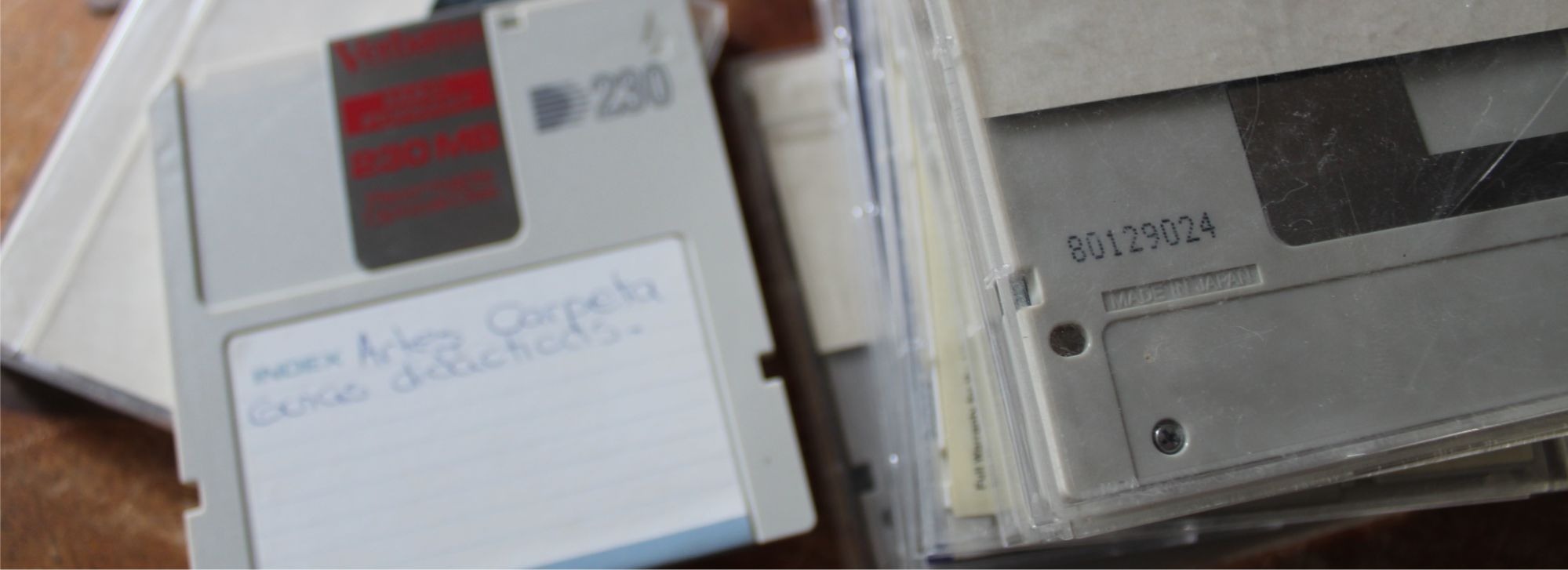The old diskettes
Media archaeology is a recently created discipline dealing with new and emerging media through examination and critical study of past materials. It focuses especially on the so-called "dead media": obsolete and forgotten communication technologies.
One of those dead media are diskettes or floppy disks: a thin, flexible disk of magnetic material used for storage of digital information, enclosed in a square plastic package. Invented by IBM by the late 60s, the original size was 8 inches, but diskettes of 5 ¼ and 3 ½ inches ended up being the most popular ones. They were quite common during the last part of the 20th century — actually, the icon to "save" information in most modern software is the schematic image of a 3 ½ diskette. Although they have been superseded by safer, faster storage methods, they are still used, and there is hardware that can be connected to modern computers through a USB port in order to read old "floppies".
The CDF's Archive holds a collection of several hundred diskettes. Although a number of them are damaged and cannot be read, most of them can still be accessed. A section holds software installation data, while another one keeps database information, and a third one stores the kind of documents produced nowadays by desktop programs like Word and Excel.
Most of the information contained by those diskettes has been already downloaded into modern servers for preservation. Regardless, the original items are carefully kept, for they represent an entire period of human technology's history — and CDF's scientific work.
Aa.Vv. [Diskettes]. [Diskette]. Santa Cruz : Aa.Vv., [ca1990]. [N.d.] : [n.d.] : 9 x 9 cm. DDC 986. Well preserved.
Subject categories: History of CDF | History of Galapagos | History of science
Keywords: Archives | Diskettes
Time framework: 1990
Text & picture: Edgardo Civallero (edgardo.civallero@fcdarwin.org.ec).
Publication date: 1 May 2022
Last update: 1 May 2022
